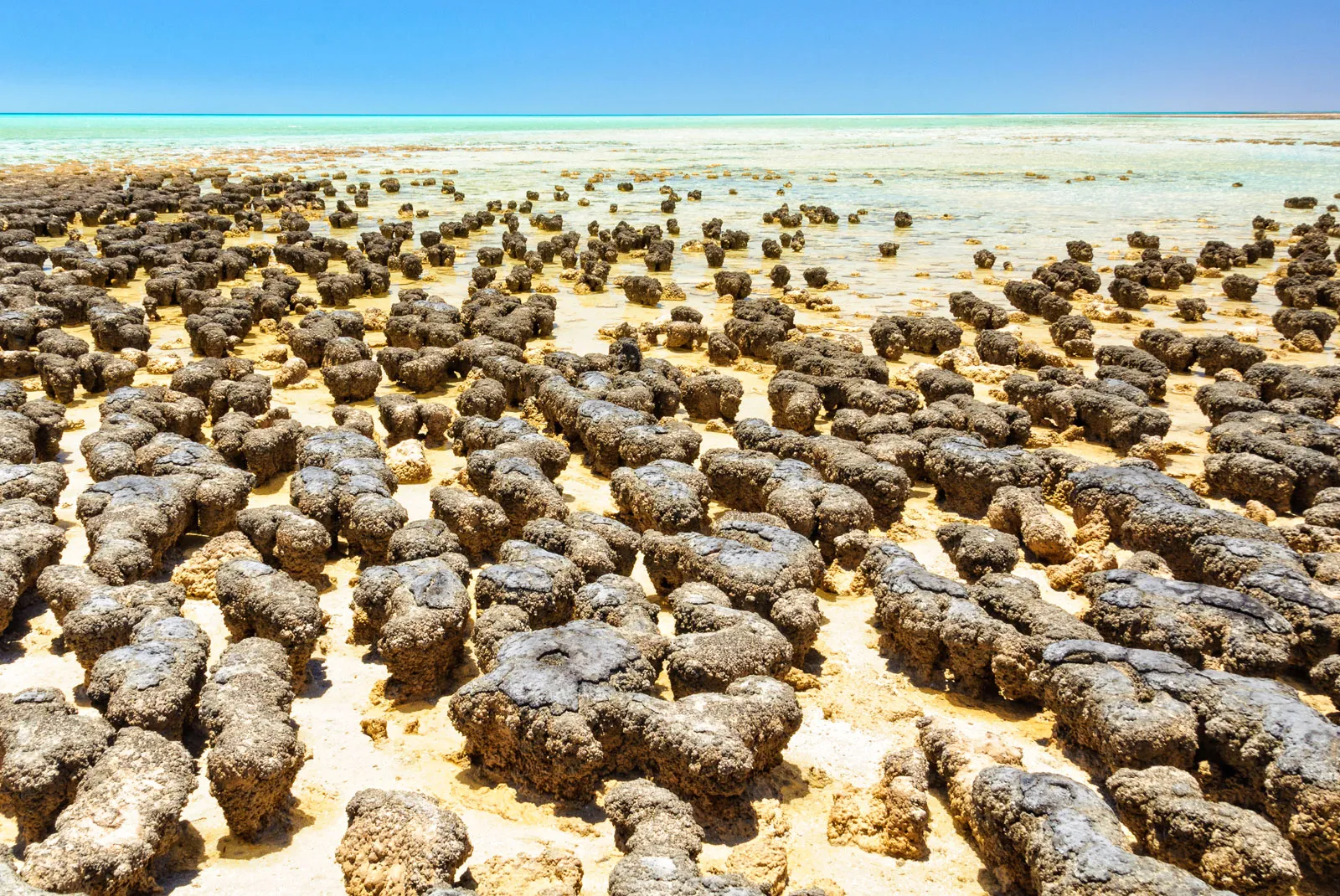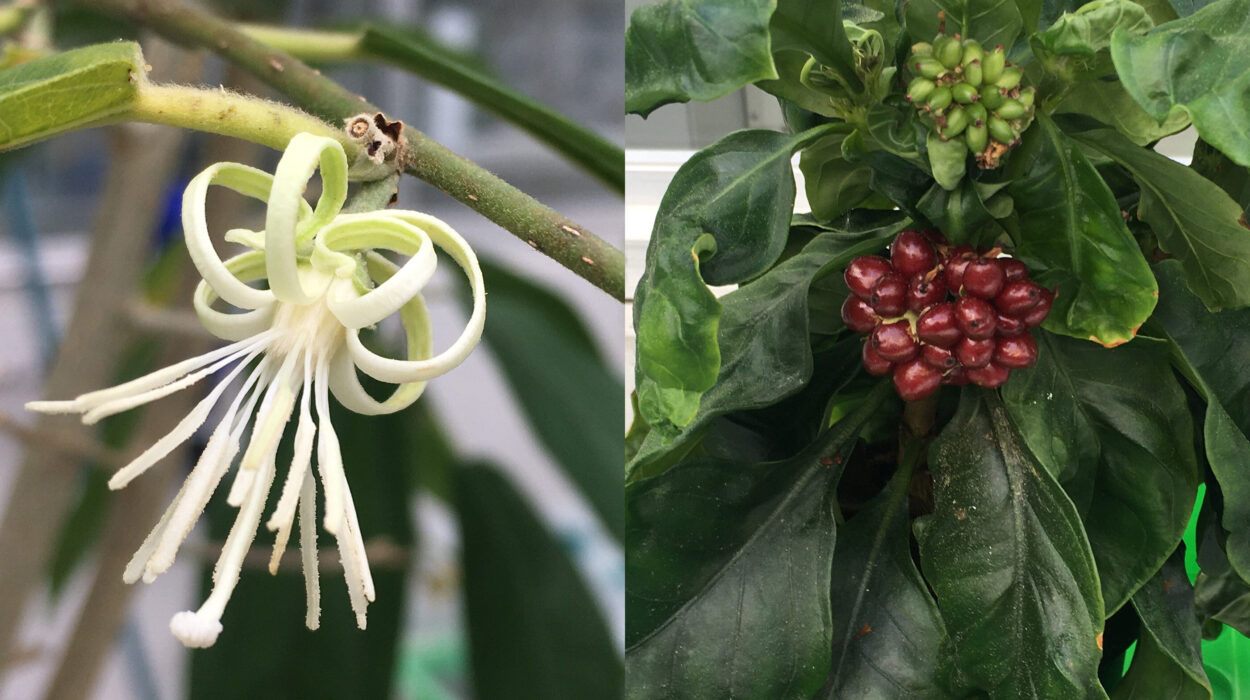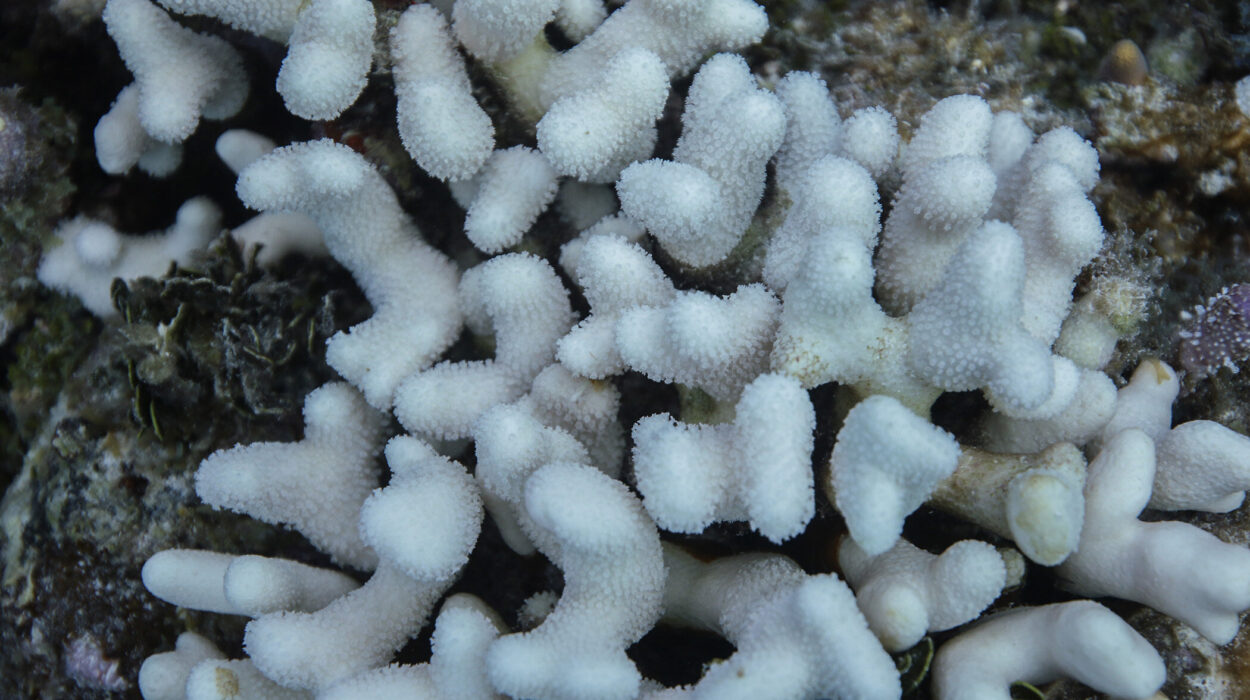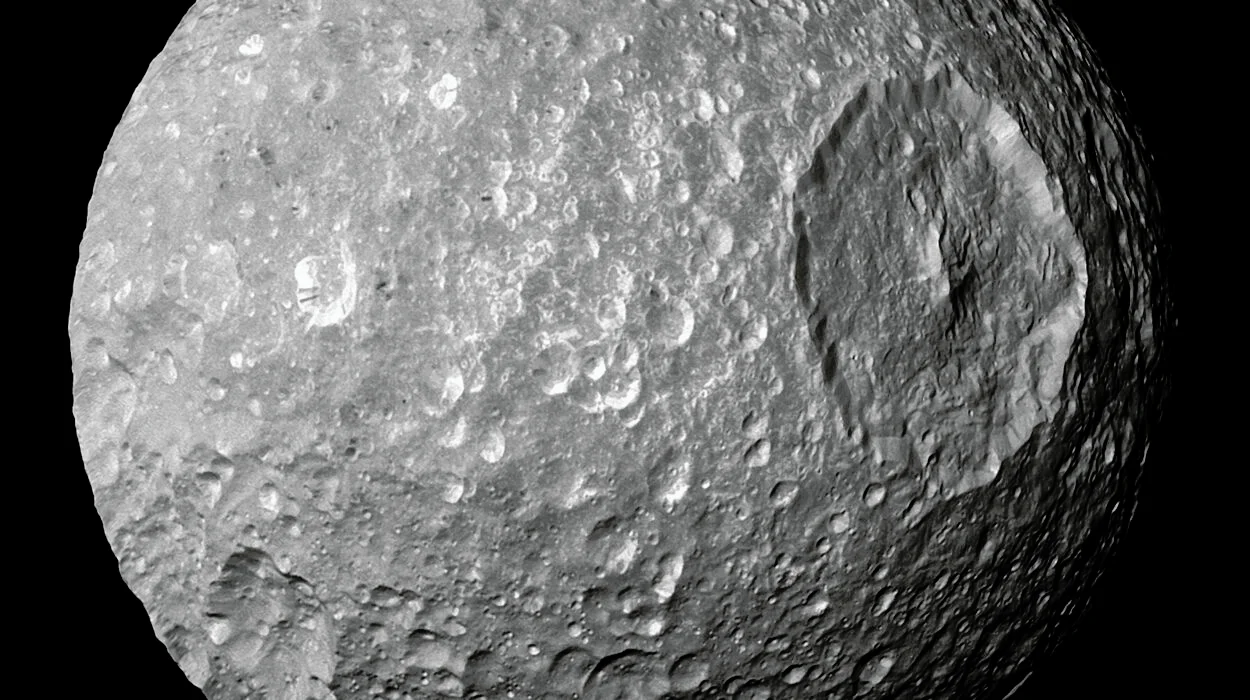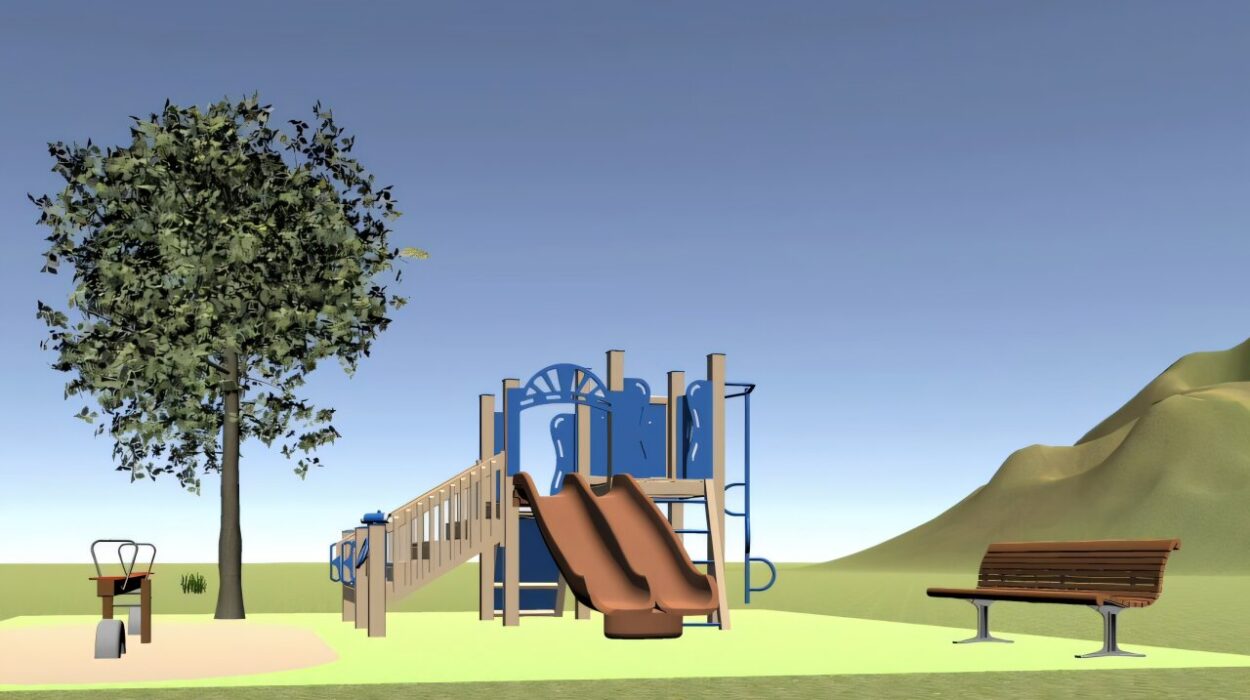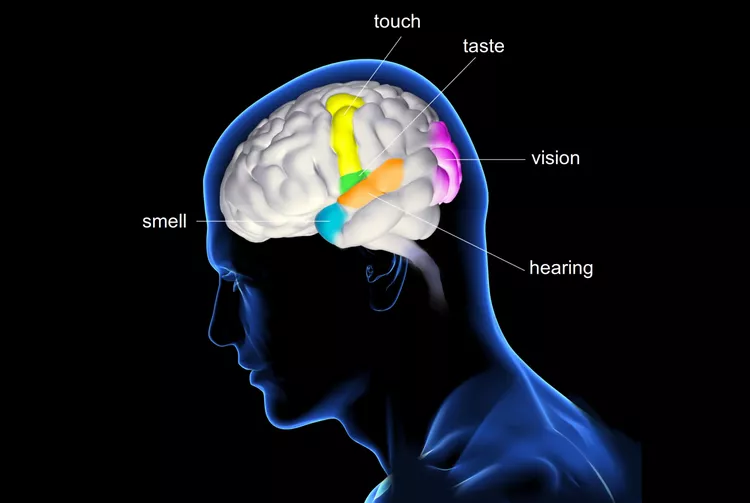When we look at the Earth today, vibrant with forests, rivers, oceans, and an unfathomable variety of life, it is easy to forget that our planet was once utterly lifeless. There was a time when not even a whisper of biology existed in the sweeping void of rock and gas that formed this world. But buried deep within ancient stones—some older than continents themselves—lie the fingerprints of life’s earliest breath. These are fossils, but not the familiar bones of dinosaurs or imprints of leaves. These are much older, much smaller, and far more mysterious. They are the molecular, chemical, and microscopic echoes of the first living organisms that ever called this planet home.
The search for the oldest fossils is a journey through nearly incomprehensible time. It is a pilgrimage to the dawn of life—back billions of years—to a time when Earth’s skies were choked with volcanic ash, when oceans boiled, and when the very concept of a living thing was just beginning to take root in a hostile, alien world. To understand these fossils is to understand ourselves—because from these primitive forms of life eventually came everything we know: animals, forests, civilizations, even human consciousness itself.
Life’s Humble Origins in a Violent World
The early Earth was a world few modern lifeforms could survive. Four and a half billion years ago, after Earth coalesced from a swirling disk of dust and rock, it was a molten sphere bombarded by asteroids and seared by solar radiation. The crust was unstable, the atmosphere toxic. Yet within just a few hundred million years, something miraculous occurred—life emerged.
The origin of life remains one of science’s greatest mysteries. Whether it began in hydrothermal vents, warm little ponds, or through some process we have yet to imagine, life somehow found a way. The earliest forms were not cells as we know them, but self-replicating molecules—chains of organic compounds that could copy themselves, interact with their environment, and evolve. Over time, these molecules were enclosed in protective membranes, giving rise to the first true cells.
These primitive life forms—most likely prokaryotic microorganisms—were the first architects of biological history. But because they were soft-bodied and microscopic, their remains are nearly impossible to find. Unlike the skeletons of dinosaurs or the shells of ancient trilobites, these cells left behind no bones or shells. What they did leave, if anything, were tiny impressions, chemical residues, or layered structures built by colonies over eons.
Stromatolites: The Ancient Living Monuments
The oldest and most striking evidence of early life comes in the form of stromatolites—layered rocks that bear the unmistakable architecture of biology. These formations are built by communities of microorganisms, primarily cyanobacteria, that trap sediment and excrete minerals, creating domed structures over time.
Modern stromatolites can still be found in a few places on Earth today, such as Shark Bay in Western Australia. But fossil stromatolites are vastly older, and some of the most ancient examples are nearly 3.5 billion years old. Found in the Pilbara region of Western Australia and the Barberton Greenstone Belt in South Africa, these rocks are not just ancient—they are sublime. Under microscopes and geochemical analysis, they reveal signatures that cannot be explained by purely geological processes. Their laminar, domed shapes suggest the gradual buildup by microbial mats that once thrived in shallow, sunlit waters.
But even here, the evidence is not universally accepted. Stromatolites could, in theory, form through abiotic processes—natural sediment layering or chemical precipitation. Scientists must tread carefully, using a suite of tests to distinguish biological from geological origins. Yet the majority consensus supports that many of these ancient stromatolites are indeed biological in origin. If so, they represent the visible tombstones of Earth’s first great innovation: photosynthesis.
These early cyanobacteria didn’t just survive—they transformed the planet. By harvesting sunlight and releasing oxygen as a byproduct, they began the slow, relentless oxidation of Earth’s atmosphere. The oxygen they released would eventually make complex life possible—but it also caused the first mass extinction, wiping out countless anaerobic species. Life, even at its birth, shaped and reshaped the world in both creative and destructive ways.
Graphite Clues in the Canadian Shield
While stromatolites provide visible evidence of early life, another line of discovery digs even deeper—into the atomic fabric of ancient minerals. In the Nuvvuagittuq Greenstone Belt in Quebec, Canada, geologists uncovered 3.95-billion-year-old rocks that contain tiny flecks of graphite—pure carbon. What makes this graphite fascinating is its isotopic signature.
Carbon exists in several forms, or isotopes. Biological processes tend to prefer the lighter isotope, carbon-12, over carbon-13. This preference leaves behind a detectable skew in the ratios between these isotopes in ancient rocks. The graphite found in Canada exhibits this very signature. Though not a fossil in the traditional sense, this chemical fingerprint suggests that some form of life was already present nearly 4 billion years ago—almost as soon as the planet cooled enough to sustain liquid water.
The implications are staggering. If life emerged so quickly after Earth’s formation, it raises the tantalizing possibility that life might arise wherever conditions are right. It also pushes back the timeline for biology, suggesting a resilience and inevitability that challenges the idea of life as an improbable miracle. Perhaps, given the right ingredients and a little time, life is not a cosmic accident—but a natural unfolding.
The Case of the Isua Rocks in Greenland
Another candidate for the oldest evidence of life comes from the Isua Greenstone Belt in southwestern Greenland. These rocks, dated to around 3.8 billion years ago, contain banded iron formations and sedimentary structures that suggest a marine environment. Within these rocks, researchers have found carbon isotope ratios similar to those in the Canadian graphite, hinting at biological activity.
But beyond isotopic ratios, the Isua rocks may also preserve microscopic structures that resemble microfossils—tiny, tube-like forms made of iron oxide. Some scientists interpret these structures as the remains of ancient microbes that once lived near hydrothermal vents. Others remain skeptical, arguing that such features could be produced by mineral processes.
This uncertainty underscores the challenges of studying rocks so ancient. Time has not been kind to these early records. Heat, pressure, and tectonic forces have warped and recrystallized the stones, erasing or distorting much of the original evidence. The Earth’s crust is not a static museum—it is a restless, churning system that grinds down and recycles its own history.
A Martian Mirror: Could Life Have Started Elsewhere?
The search for Earth’s oldest fossils inevitably leads to a question that seems almost too audacious to ask: Did life originate here at all? Or could it have come from elsewhere—perhaps Mars?
Mars, once warm and wet, may have had habitable conditions before Earth did. Some scientists propose that life could have begun on Mars and been transported to Earth via meteorites. This hypothesis, known as panspermia, is controversial but not implausible. Several Martian meteorites found on Earth contain structures that resemble microfossils, though the interpretation remains debated.
If we ever find definitive evidence of ancient life on Mars—or even signs that Mars was once more biologically active than Earth—it could rewrite everything we think we know about life’s origins. For now, Earth holds the oldest known traces of life in the universe. But our neighbor might be hiding its own silent fossils, waiting to tell their story.
Microfossils: The Fragile Cradle of Cells
One of the most exciting frontiers in the study of early life is the discovery of microfossils—the preserved remains of individual cells or microbial colonies in ancient rock. In 2017, researchers reported the discovery of possible microfossils in Quebec’s Nuvvuagittuq rocks, the same location that yielded the ancient graphite. These structures, just a few micrometers across, are composed of iron and may represent ancient bacterial filaments.
If confirmed, they would be the oldest microfossils ever found, predating previous finds by hundreds of millions of years. But as always, controversy surrounds them. Their mineral composition could, in theory, arise from non-biological processes, especially under the extreme conditions in which these rocks have existed.
The problem is one of context. A microstructure alone is not enough. Scientists must look at the surrounding minerals, the isotopic signatures, the spatial arrangement, and the geological history. It is like reconstructing a crime scene where the crime happened billions of years ago and much of the evidence has been swept away by earthquakes, floods, and volcanic eruptions.
Still, each new discovery pushes the timeline further back. Each microscopic wisp of carbon or twisted filament of iron tells a story—maybe of life, maybe of chance. But the possibility is enough to fuel entire careers, and the quest continues.
Chemical Fossils: The Scent of Ancient Life
Not all fossils are visible. Some exist only as molecular residues—what scientists call biosignatures. These chemical fossils include lipids, pigments, and other organic compounds that are uniquely produced by living organisms. One class of molecules, known as hopanes, is associated with bacterial cell membranes and has been found in rocks over 2.7 billion years old.
These molecular fossils can be incredibly resilient, surviving when cells themselves are long gone. But their interpretation is fraught with difficulty. Contamination from modern life is a constant concern, and natural processes can sometimes mimic the patterns left by biology. Nonetheless, chemical fossils offer a powerful way to peer into the deep past.
In some ways, they are the scent trails of ancient microbes—faint aromas lingering long after the creatures themselves have vanished. And like scent, they are evocative but elusive, easy to misread, yet profoundly suggestive.
A Planet Forever Changed
The organisms that left behind these ancient traces were small, but their impact was vast. They reshaped Earth’s oceans, atmosphere, and crust. They laid the groundwork for everything that would come after—plants, animals, humans.
The Great Oxygenation Event, triggered by cyanobacteria, transformed Earth’s chemistry and led to the formation of the ozone layer, protecting life from harmful ultraviolet radiation. It also caused the first major extinction, wiping out anaerobic organisms that could not tolerate oxygen. From the beginning, life has been both a creator and a destroyer.
The very rocks of Earth bear witness to this transformation. Iron formations, now mined for steel, were laid down by the chemical reactions of ancient microbes. Limestone cliffs and chalky seafloors are the accumulated remains of tiny organisms that died by the trillions. We walk upon the bones of the ancient biosphere.
The Meaning of Ancient Life
Why do we search for fossils so old that they cannot be seen without a microscope? What compels scientists to crawl across the Australian outback or chip away at icy Greenland rocks? It is not merely curiosity—it is a hunger to know where we come from.
The oldest fossils are not just records of biological processes. They are love letters from the earliest life to everything that followed. They tell us that even in the most inhospitable conditions, life found a foothold. That survival and innovation began at the very beginning. That we are not newcomers to Earth, but part of a story four billion years in the making.
And perhaps, if we listen closely to these ancient stones, they will whisper not only of the past—but also of what life might look like elsewhere in the universe.
